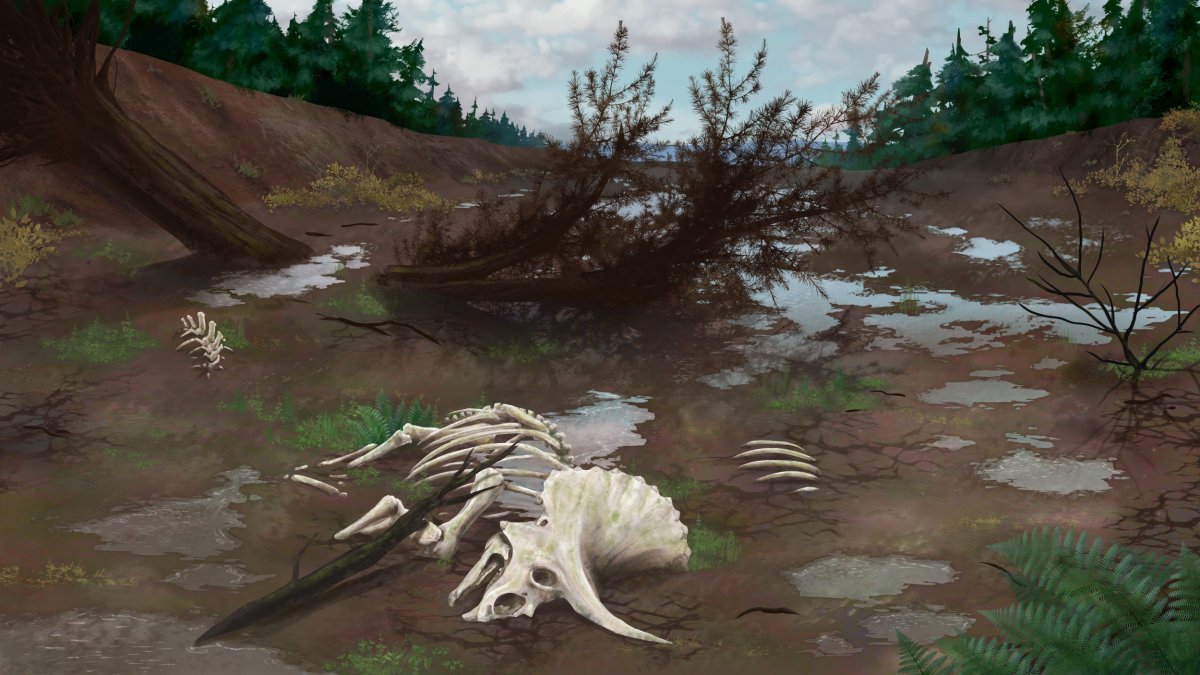It turns out that Jurassic Park got another aspect of dinosaur life right: triceratops may indeed have lived and moved in herds.
There had been no previous evidence in the fossil record to suggest that these ancient three-horned dinosaurs had been anything but solitary, but now, according to new research from the Naturalis Biodiversity Center in the Netherlands, it seems that some at least lived together.
The researchers found the fossils of five of these dinosaurs clustered together in Wyoming, showing that they lived and died in a group.
Bart Bus / Dinolab team of Naturalis
The team had originally been looking for a fossilized tyrannosaurus in the summer of 2013 when they stumbled across the remains of the triceratops. Over the next 10 years, they uncovered over 1,200 bones and bone fragments from these five triceratops, which indicated that the group died together, possibly in a swamp of some kind. There were no bones from other species nearby.
“The material is of very good quality”, paleontologist Jimmy de Rooij, who is writing his Ph.D. thesis on the discovery at Utrecht University, said in a statement. “This enabled us to show that these triceratops grew really slowly, for instance.”
Triceratops are one of the most recognizable and well-known dinosaurs from the Late Cretaceous period, living approximately 68 to 66 million years ago. They were large, quadrupedal herbivores characterized by their distinctive frill and three facial horns, two of which could grow over 3 feet long. Adults could grow to lengths of around 26 to 30 feet, and were about 9 to 10 feet tall at the shoulder.
They were herbivores, primarily feeding on low-lying vegetation such as ferns, cycads, and other plants that were abundant during the Late Cretaceous period. Fossils of triceratops have been found in North America, primarily in the western United States, particularly in states like Montana, South Dakota and Wyoming.
Triceratops, like many other dinosaurs, went extinct around 66 million years ago during the Cretaceous-Paleogene extinction event.
Research on the physical and chemical properties of the dinosaurs’ teeth revealed that the five triceratops had the same migratory existence, implying that they moved as a group at least some of the time.
“And that of course leads to all kinds of new questions”, De Rooij said. “How complex was this social behavior, exactly?”

Nadia de Waal
The researchers are excited about this discovery, as it confirms a long-held theory about these ancient animals.
“Naturalis, the national natural history museum of the Netherlands, now has the biggest triceratops find in the world, and Utrecht University has the first Dr Triceratops in the Netherlands. De Rooij’s work didn’t just result in research papers, but also in an exhibition about his findings,” Anne Schulp, a professor of paleontology at Naturalis and Utrecht University and De Rooij’s supervisor, said in the statement.
“As of October, the exhibition will kick off at Naturalis – and kick off the world tour – where the five triceratops are shown as they lived and died 67 million years ago: together,” she said.
Do you have a tip on a science story that Newsweek should be covering? Do you have a question about triceratops? Let us know via [email protected].
Uncommon Knowledge
Newsweek is committed to challenging conventional wisdom and finding connections in the search for common ground.
Newsweek is committed to challenging conventional wisdom and finding connections in the search for common ground.


